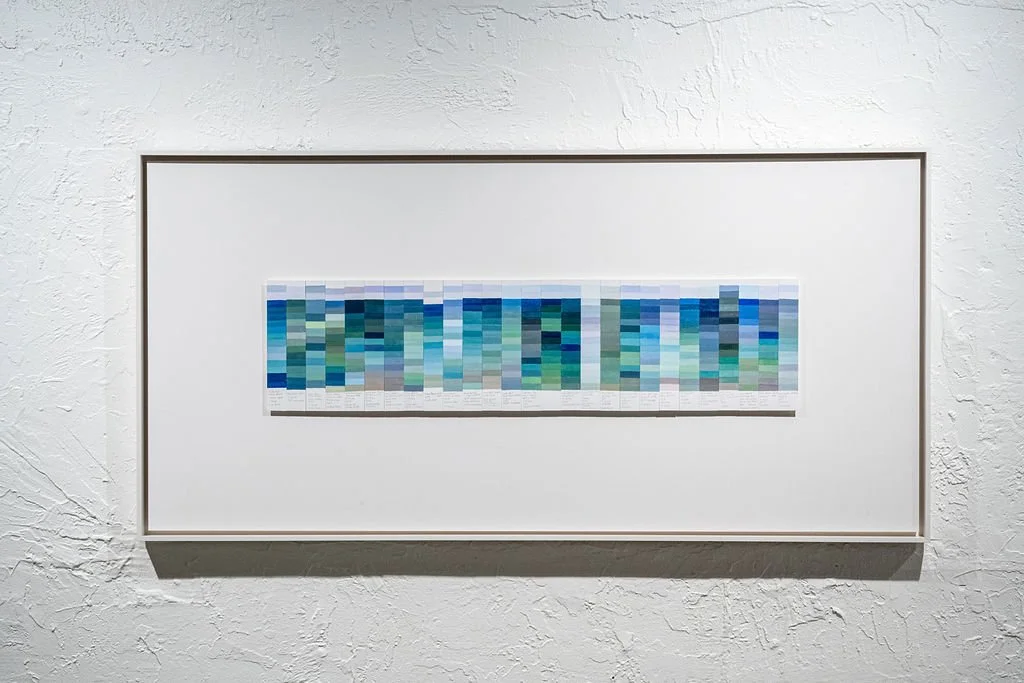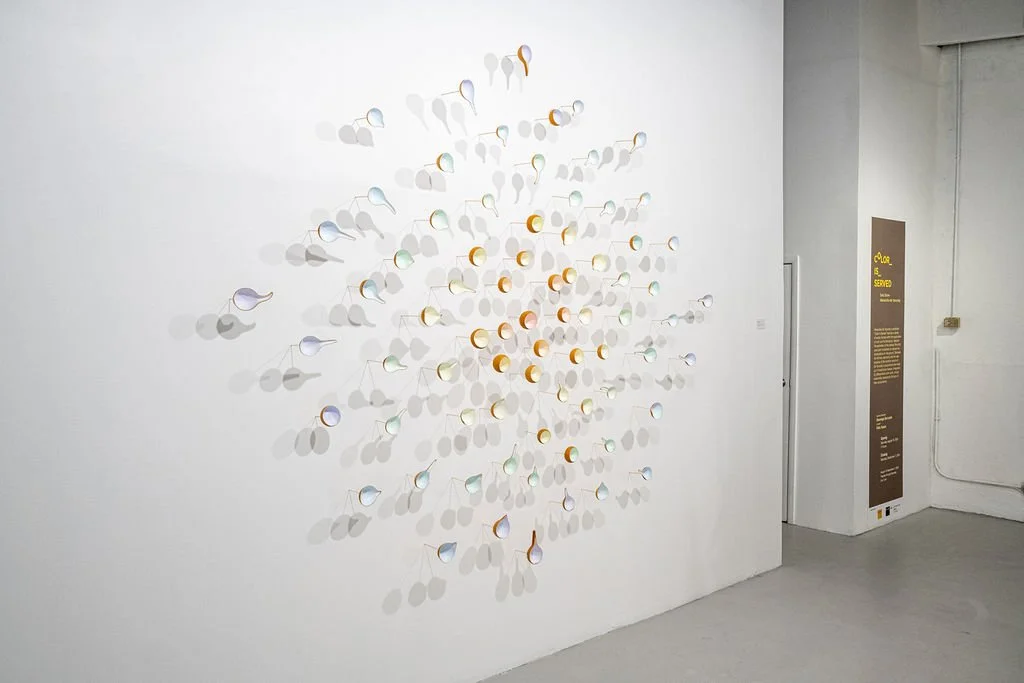VoyageMIA
LOCAL STORIES June 5, 2025
Rising Stars: Meet Alexandra De Yavorsky of Miami Beach
Photo by @LeslieGabaldon
Today we’d like to introduce you to Alexandra De Yavorsky.
Alright, so thank you so much for sharing your story and insight with our readers. To kick things off, can you tell us a bit about how you got started?
I’m a graphic designer and visual artist.
My connection to the world of art began at a very young age during Sunday visits to museums and galleries with my family. I was born into a creative home, and without realizing it, I started to give structure to my creativity when I studied at the Instituto de Diseño Neumann–IDD in Caracas. It was a demanding school, and I was fortunate to learn from exceptional teachers—accomplished designers who carried on the legacy of their Bauhaus-trained mentors, as well as remarkable artists and thinkers.
While studying design, I began working professionally, which allowed me to immediately apply what I was learning. I worked in production and as a freelance designer for major international companies, and I also collaborated with a respected art gallery—driven by a desire to stay close to artists and their work. I’ve never been able—or wanted—to separate art from design in my creative life.
I lived in Chile from 1989 to 1994. After returning to Venezuela, my husband and I moved to a small fishing village called Choroní, looking to distance ourselves from the noise of Caracas. I had never been there before—my mother brought me at a turning point in my life—and I immediately knew I had found my place in the world. To get there, we crossed Venezuela’s oldest national park along a winding two-and-a-half-hour road through a humid cloud forest, part of the second mountain range in the world with the highest concentration of bird species. The landscape filled me with wonder: a perfectly balanced natural world, rich in detail, generous in beauty—and at the end of the road, the Caribbean Sea.
Those were years of intense work—restoring old colonial houses, bringing our “posadas” (inns) and local craft and design store to life, researching local materials, and recovering traditional recipes for handmade paints used during colonial times. I also taught drawing and other subjects at a design school in Maracay. In 2014, I began working remotely with my brother’s studio, Atelier de Yavorsky, and by 2016 I moved to Miami to support him in person on a project that soon led to many others.
Then came the pandemic in 2020—a significant pause and a deep personal reset. I experienced emotional vertigo for the first time and had to make a conscious, radical shift. Around that time, I was invited to a gathering where the main topic was color. I didn’t hesitate. That moment marked a turning point. Over the past four years, I’ve continued working in design while fully committing to my color-based artistic practice. Throughout this journey, I’ve embraced what it means to expose myself without filters—using art as both personal language and creative offering.
Would you say it’s been a smooth road, and if not what are some of the biggest challenges you’ve faced along the way?
When you’re focused and know how to be patient, the journey feels lighter. It gives you perspective and time to adjust. The path is always full of challenges, and even the simplest ones can be demanding. But when you love turning your project vision into something tangible—or helping others shape theirs—solving problems and creating with care and conviction becomes an act of passion. You learn to celebrate the small wins.
The biggest challenge at this stage in my life has been changing countries. But it has come with great rewards. When you take the time to reflect on your own story and recognize what it means to have arrived where you are, even the hardships become something to be grateful for.
As for my art installations, I “serve color” in natural vessels called táparas, and bringing them from Choroní hasn’t been easy. It requires long-distance coordination and the involvement of many people. That energy becomes an essential part of the work itself. This body of work is called “Color is Served”. Just like the táparas from Choroní, I’ve also worked with mini-calabashes harvested and cleaned by the Yek’wana people of the Amazon, and with palm spathes gathered here in Miami by people with specialized trucks that collect them carefully to prevent damage.
All of them are natural substrates where I serve color—blending hue, shadow, structure, and emotion without words.
Challenges invite us to move forward, to reflect, to pause, and then to begin again. They shape our path—and if we welcome them when they arrive, they become the very force that allows us to grow.
At this moment, I pause to thank my husband and my son, Domingo and Felix, my family, Yesenia, Gabriela, my loyal friends, and all those who, in some way, through their involvement in my journey, have helped me get to this point.
As you know, we’re big fans of you and your work. For our readers who might not be as familiar what can you tell them about what you do?
Art and design are two worlds that have always been present in my life.
I focus on creating color installations that awaken emotion without the need for words. I’ll never forget a moment during my solo show in 2024, when a person stood in front of one of my pieces and suddenly burst into tears. She couldn’t explain what triggered it, and I didn’t want to ask. Whatever it was, it felt like a release—tears born somewhere between joy and memory.
One of my commissioned installations in blue revealed this phenomenon: although the pieces may appear violet, brown, blue, or gray when seen together, once you remove one from the composition and view it in isolation, the presence of blue becomes evident—something that fades when coexisting with the others.
In the spathe installations, the color seemed to emerge on its own. In each piece, I worked with a natural stain already present in the material, revealing it as a distinct hue. The final result—produced through an almost random process—displayed surprising balance and harmony. The color palette unfolded in soft pinks, yellows, oranges, browns, blacks, light blues, and greens—tones one wouldn’t expect to find there.
Then there’s the energy explosion in the mini-calabash series. Suspended above a bed of their own shadows, they radiated outward in an expansion of vibrant fragility—held together by six chromatic whites.
In another work, from my Pinpoint series, the shadow is tinted through the refraction of the color contained within the units themselves—not by the light source directly. It’s a rare optical phenomenon, blending light physics, art, and visual perception. It could be described as refracted chromatic shadow. I’m currently exploring how refracted color can alter both shadow and projected hue. In these Pinpoint installations, the shadow is not a void of light—it’s essential. It becomes a space infused with the chromatic memory of the object that casts it.
As you can see, my artistic work is deeply rooted in color. It’s a challenging discipline, because the more one experiments and reflects, the more new questions arise. That’s why it’s so important for me to take notes as I go—so I can return to them later and continue developing the research I have in progress.
Is there a quality that you most attribute to your success?
Consistency, observation, honesty, intuition, and passion.
Contact Info:
Website: https://www.alexandradeyavorsky.com
Instagram: @alexandradeyavorsky
LinkedIn: Alexandra de Yavorsky
Photo by @AlfredoAstaburuagaDY
Photo by @AlfredoAstaburuagaDY
Photo by @AlfredoAstaburuagaDY
Photo by @RafaelGuillen
Photo by @RafaelGuillen
Photo By @RafaelGuillen
Photo by @ADY
Photo by @ADY








